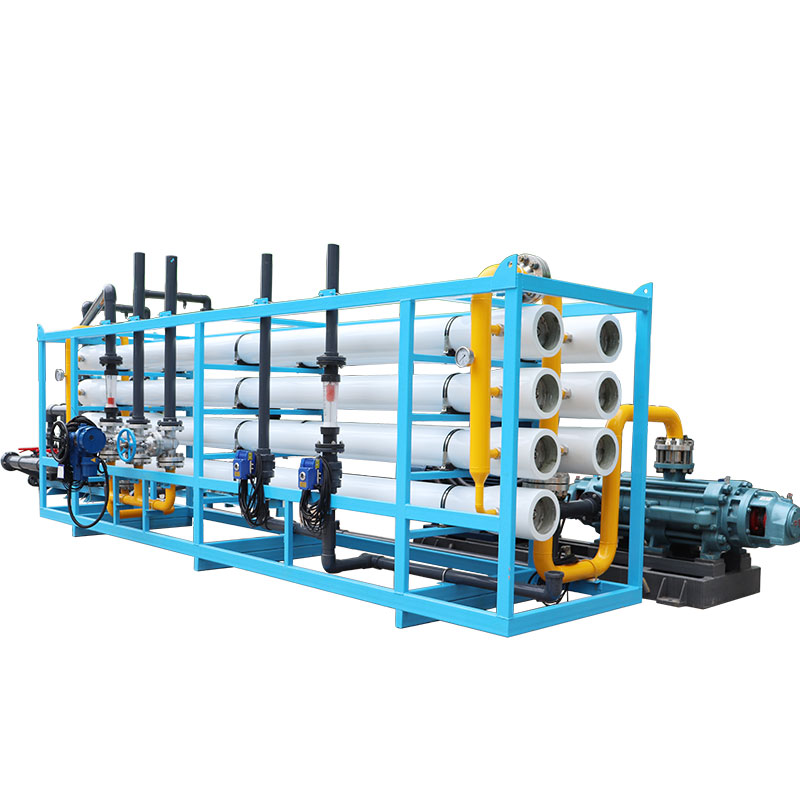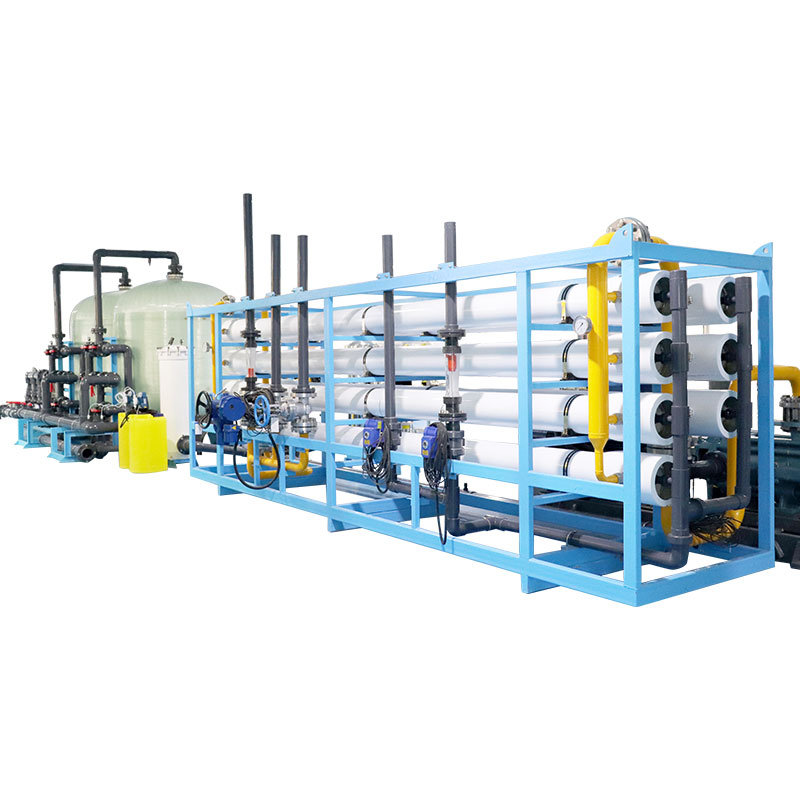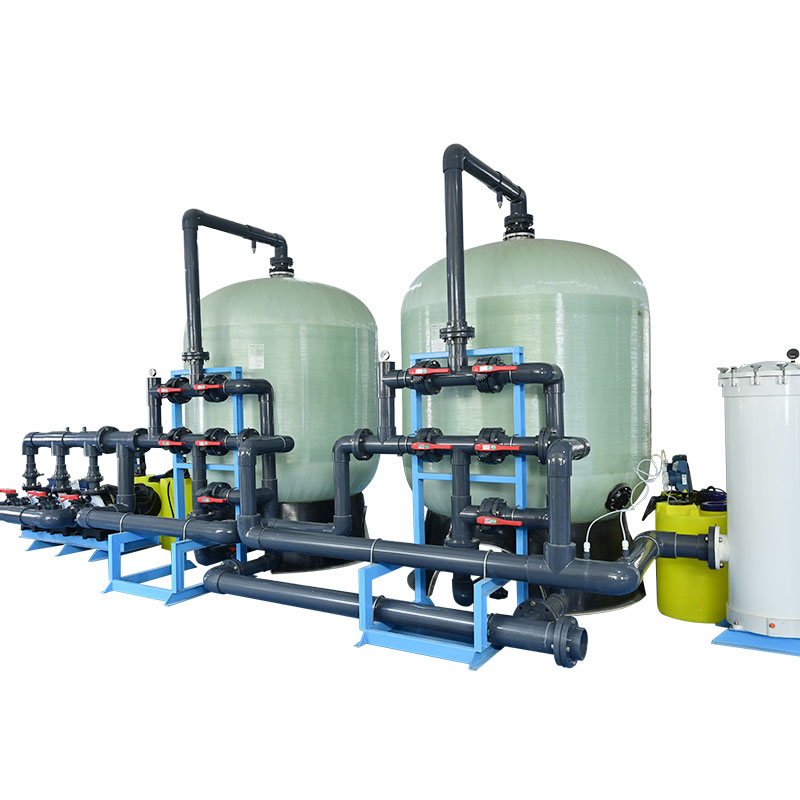Where is the largest water desalination plant?
In today's society, desalination technology is of great significance in alleviating the shortage of fresh water resources. There is strong interest in where the largest desalination plants are located, and Saudi Arabia's Ras Al Khair desalination plant is the center of attention.
Ras Al Khair Desalination Plant Scale and Technology
The Ras Al Khair desalination plant, located in Saudi Arabia, uses reverse osmosis (RO) technology and is one of the largest desalination plants in the world. The plant produces approximately 1,036,000 cubic meters of fresh water per day, providing valuable fresh water resources to Saudi Arabia and surrounding areas. RO technology used in desalination plants is an efficient method of desalinating seawater. RO technology uses high pressure to force seawater through a semi-permeable membrane. The salt and other impurities in the seawater can be effectively filtered out, thereby obtaining clean fresh water. This technology has been widely used around the world and has become one of the important means to solve the problem of fresh water resource shortage in many regions.
Saudi Arabia’s Freshwater Needs and Desalination:
Saudi Arabia is an arid country with relatively scarce freshwater resources. In order to meet the country's growing demand for fresh water, the Saudi Arabian government has invested in the construction of many desalination plants, of which the Ras Al Khair desalination plant is one of them. The construction of these desalination plants provides Saudi Arabia with reliable freshwater resources and provides important support for the country's economic and social development.

What is the role of RO technology in seawater desalination?
After understanding the RO technology used in the Ras Al Khair desalination plant in Saudi Arabia and the application of this technology, let us have a deeper understanding of the role of RO technology in seawater desalination.
The principle of RO technology:
First of all, RO technology is a technology that separates water and solutes through a semipermeable membrane. During the desalination process, seawater is pushed through a semipermeable membrane that allows only water molecules to pass through, leaving salt and other impurities on the other side of the membrane. In this way, the water treated by RO technology becomes clean and pure and can be used for various purposes, including drinking, agriculture and industry.
Advantages of RO technology:
Secondly, RO technology has many advantages, making it one of the commonly used technologies in seawater desalination. First of all, RO technology can efficiently remove salt and other impurities from seawater, producing high-quality, high-purity fresh water. Secondly, RO technology is simple to operate and has mature technology, making it suitable for seawater desalination projects of all sizes. In addition, RO technology can also be used in conjunction with other water treatment technologies to improve desalination efficiency and water quality.
Application fields of RO technology:
Finally, RO technology is not only used for seawater desalination, but is also widely used in other fields. In addition to desalination plants, RO technology can also be used for surface water and groundwater treatment, wastewater regeneration, drinking water purification, etc. Due to its high efficiency, reliability and flexibility, RO technology plays an important role in solving water shortages and ensuring water security.

What impact do desalination plants have on the environment?
Energy consumption and carbon emissions
The construction and operation of seawater desalination plants have certain impacts on the environment. First, in terms of energy consumption, the desalination process requires a large amount of electricity, and the production of electricity usually relies on fossil fuels, which will increase the demand for fossil energy, lead to more carbon emissions, and exacerbate climate change. Therefore, desalination plants need to seek renewable energy alternatives in terms of energy consumption to reduce negative impacts on the environment.
Salt emissions and marine ecology
Second is the issue of salt emissions. The desalination process produces large amounts of salt by-products, which if not treated and disposed of, can have negative impacts on surrounding marine ecosystems. The discharge of high-concentration salt water into the ocean may cause changes in seawater density, affect the living environment of marine life, and even have a chain impact on the marine ecological chain. Therefore, desalination plants need to take effective salt discharge treatment measures to protect the surrounding marine ecological environment.
Social impact and sustainable development
Finally, the construction and operation of desalination plants will also have a certain impact on local society. The construction of desalination plants may involve land acquisition, water resource allocation and other issues, which will have an impact on the lives and economy of local residents. Therefore, desalination plants need to fully consider the interests of all parties in society and take appropriate social responsibility measures to promote sustainable development and social harmony.

What is the future direction of desalination technology?
Technological innovation and cost reduction
The future development direction of seawater desalination technology mainly includes technological innovation and cost reduction. With the advancement of science and technology, new desalination technologies continue to emerge, such as pressure shift osmosis (PTV) technology, solar desalination technology, etc. These technologies have advantages in energy consumption and cost, and are expected to become the development direction of the desalination field in the future.
Environmental protection and sustainable development
The future development of seawater desalination technology also needs to pay attention to environmental protection and sustainable development. New seawater desalination technology should be committed to reducing energy consumption and carbon emissions, using more environmentally friendly materials and processes, and reducing negative impacts on the environment. At the same time, we must pay attention to social responsibility, actively participate in local community building and environmental protection, and promote sustainable development and social harmony.
International cooperation and experience exchange
In addition, the future development of seawater desalination technology requires strengthening international cooperation and experience exchange. Countries can share technology and experience to jointly respond to the challenge of global water shortages, promote the innovation and application of seawater desalination technology, realize the sustainable use and sharing of water resources, and promote global sustainable development.




